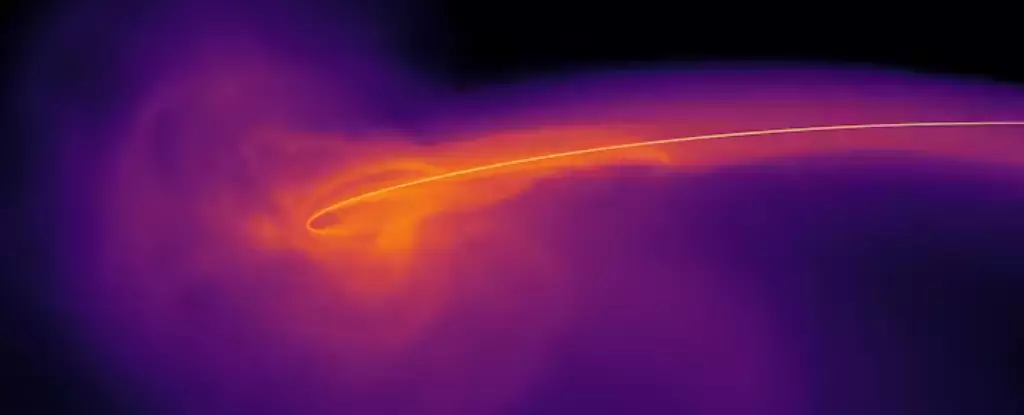Giant black holes residing in the centers of galaxies such as the Milky Way have been observed to engage in a peculiar activity – consuming nearby stars and transforming them into a dramatic spectacle of destruction. This process, known as a tidal disruption event, involves the star being stretched and torn apart as it approaches the supermassive black hole. Despite the wealth of knowledge accumulated over the years, the majority of these events have been found to emit light mainly in visible wavelengths rather than X-rays, contradicting initial theories.
The Surprising Findings
The discovery of the observed temperatures in the debris reaching only 10,000 degrees Celsius, akin to the surface of a moderately warm star, poses a significant challenge to the existing understanding of these events. Equally perplexing is the size of the luminous material surrounding the black hole, several times larger than our Solar System and expanding at a rapid pace away from the black hole at a fraction of the speed of light. These unexpected characteristics have left astrophysicists scratching their heads in search of a plausible explanation.
The Role of Simulations
To address the discrepancies between theoretical predictions and observed phenomena, a recent study published in The Astrophysical Journal Letters employed sophisticated simulations to unravel the mysteries of tidal disruption events. The simulations, conducted by a team of researchers, shed light on the intricate details of the process, from the initial spaghettification of the star to the subsequent dispersal of debris. By incorporating Einstein’s general theory of relativity into the simulation framework, the team was able to capture the complex dynamics near a supermassive black hole.
Contrary to popular belief, black holes do not consume all the material from the disrupted star. Only a mere 1% of the debris is eventually consumed by the black hole, while the remainder is expelled in what can be likened to a cosmic “burp”. The simulations offered a comprehensive depiction of this process, showcasing how the material spirals back towards the black hole, generating intense heat and powering a spherical outflow that escapes the central engine.
One of the key revelations from the simulations is the concept of smothering, where the excess material that the black hole cannot ingest suffocates the central engine and is ejected outward. This mechanism elucidates why tidal disruption events exhibit the peculiar characteristics observed through telescopic observations. The simulations corroborate the notion of a solar-system-sized star expanding at a fraction of the speed of light, driven by the relentless activity of the black hole at its core.
The study’s findings provide a compelling explanation for the enigmatic behavior of tidal disruption events and offer valuable insights into the dynamics of supermassive black holes. By utilizing cutting-edge simulations and embracing the complexities of general relativity, researchers have taken a significant step towards demystifying the cosmic phenomena that unfold in the vast expanse of the universe.


Leave a Reply